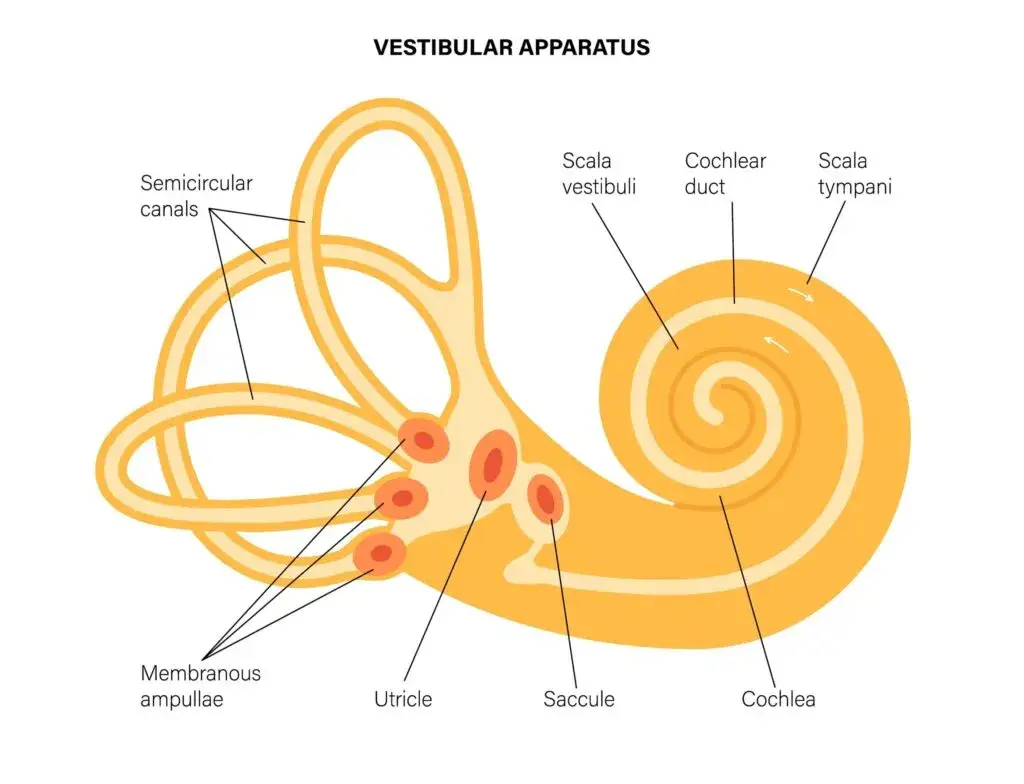
Headache Treatment Lakewood Ranch: Headaches affect millions of people worldwide, robbing them of productivity, joy, and quality sleep. At Lavender Family Chiropractic in Sarasota, Florida, we understand that headaches—whether they present as tension‐type pressure, throbbing migraines, sinus-related pain, or cervicogenic discomfort—do more than just hurt. They can disrupt work, family life, social activities, and mental well-being.
Unlike conventional treatments that often mask symptoms with medication, our upper cervical chiropractic approach treats the root cause by restoring proper alignment of the atlas (C1) vertebra and optimizing nervous system function. In this comprehensive 3,000-word guide, you’ll discover how our state-of-the-art diagnostics, gentle, precision adjustments, and personalized care plans come together to deliver lasting headache relief—helping you reclaim your life, headache-free.
Understanding Headache Treatment Lakewood Ranch: How To Resolve Headaches
Types of Headaches
- Tension-Type Headaches
Tension headaches are the most common form, affecting up to 78% of the population at some point in their lives. They’re characterized by a dull, aching pain and a sense of tightness or pressure across the forehead and temples, sometimes extending down the back of the neck. Stress, poor posture, and muscle tension in the shoulders and upper back often trigger them. While over-the-counter pain relievers can offer temporary relief, they do not address the underlying musculoskeletal imbalances that perpetuate the cycle of tension and pain. - Migraine Headaches
Migraines impact roughly 12–15% of people globally, and they’re more than just “severe headaches.” Typical symptoms include unilateral (one-sided) throbbing pain, nausea, vomiting, and sensitivity to light (photophobia) and sound (phonophobia). Visual disturbances—or “aura”—preceding the headache phase can further complicate daily activities. Many patients rely on prescription medications, which may carry side effects and can lead to medication-overuse headaches if used frequently. - Cervicogenic Headaches
Cervicogenic headaches originate from dysfunction in the cervical spine—that is, the neck. Misalignments, disc degeneration, or facet joint irritation in the upper neck can refer pain up to the head. Pain often starts at the back of the head or upper neck and radiates forward. Because the root cause is structural, addressing spinal alignment is critical for long-term resolution. - Cluster Headaches
Cluster headaches are relatively rare but extremely debilitating. They occur in cyclical clusters—hence the name—with attacks lasting from 15 minutes to three hours, multiple times per day, often around the same time each day. Symptoms include severe, unilateral pain around the eye, redness, tearing, and nasal congestion. While acute medical interventions can abort individual attacks, preventing clusters often requires a multifaceted approach. - Sinus Headaches
Inflammation of the sinus cavities—often due to allergies or infection—can cause a deep, constant pain in the cheekbones, forehead, or bridge of the nose. Sinus headaches typically worsen when bending forward or straining. While antibiotics or decongestants treat the infection or inflammation, structural factors such as poor drainage or underlying cervical misalignments can contribute to recurring episodes.
Common Headache Triggers
- Muscle Tension & Poor Posture: Extended screen time, “tech neck,” and slouched sitting positions tighten the suboccipital muscles and trapezius, creating a cascade of tension up into the head.
- Structural Misalignments: Even minute shifts in the atlas (C1) can irritate the brainstem and cervical nerve roots, leading to referred pain patterns felt as headaches.
- Vascular Changes: Migraine pathophysiology involves dilation of cranial blood vessels. Disrupted blood flow due to autonomic imbalance can predispose to migraine onset.
- Environmental Factors: Florida’s frequent barometric pressure shifts—especially during afternoon thunderstorms—often trigger headaches and migraines. Bright artificial lighting, strong odors, and loud noises can also act as catalysts.
- Lifestyle & Diet: Dehydration, caffeine withdrawal or overconsumption, skipping meals, poor sleep quality, and alcohol—all common in busy lifestyles—can precipitate headache episodes.
The Upper Cervical Chiropractic Difference
Understanding Upper Cervical Chiropractic Care
Upper cervical chiropractic care is a highly specialized approach that focuses on the two topmost vertebrae of the spine—the atlas (C1) and the axis (C2). These vertebrae sit directly beneath the skull and play a critical role in protecting the brainstem, which serves as the main communication pathway between the brain and the body. Even minor misalignments in this region can disrupt neurological function, leading to a host of symptoms such as headaches, migraines, dizziness, neck pain, and even systemic issues like fibromyalgia or POTS. By targeting the root cause—misalignment of the upper cervical vertebrae—this precise form of chiropractic care aims to restore balance to the nervous system and promote the body’s innate healing abilities.
How Atlas Misalignment Affects Health
When the atlas shifts out of its proper position, it can place pressure on the brainstem or stretch the spinal cord ever so slightly. This tension interferes with the normal flow of cerebrospinal fluid, blood, and nerve signals. Patients often report symptoms that seem unrelated—chronic migraines, tinnitus, vertigo, or even digestive issues. Because the atlas governs the body’s primary axis of balance and alignment, an atlas misalignment can create compensations throughout the spine, altering posture and causing pain in areas far removed from the neck itself. Recognizing this interconnectedness is the cornerstone of upper cervical chiropractic philosophy.
Advanced Diagnostic Imaging: 3D CBCT X-Ray
At Lavender Family Chiropractic, we utilize state-of-the-art 3D Cone Beam Computed Tomography (CBCT) imaging to visualize the precise relationship between the skull and the upper cervical vertebrae. Unlike traditional two-dimensional X-rays, 3D CBCT provides volumetric images that reveal exact misalignment angles and the spatial orientation of vertebrae in three planes. This advanced imaging enables our doctors to tailor adjustments with unparalleled accuracy. Patients appreciate the clarity that 3D imaging provides—seeing their own anatomy in fine detail helps them understand the source of their symptoms and trust in the customized care plan our team develops.
Functional Nervous System Scans with the Tytron
In addition to 3D CBCT, we employ functional nervous system scanning using the Tytron® system. This non-invasive infrared thermography technology measures temperature differentials along the spine, indicating areas of autonomic nervous system imbalance. By comparing temperature patterns, our doctors can detect even subtle dysfunctions in nerve flow related to upper cervical misalignments. These scans are painless, quick, and provide objective data that guide our treatment protocol. Tracking these scans over time also allows us to document patient progress and demonstrate improvements in nervous system function following adjustments.
The Precision of Atlas Adjustments
Upper cervical chiropractic adjustments are markedly different from traditional “crack” techniques. Our doctors use gentle, instrument-assisted methods that apply highly controlled forces to realign the atlas without twisting, popping, or cracking the spine. Each adjustment is based on the patient’s unique 3D CBCT measurements and Tytron scan findings. This individualized approach ensures that as little force as necessary is used, enhancing patient comfort and safety. Immediately after the adjustment, many patients report a sense of lightness in the head, reduced tension in the neck, and improved clarity of thought.
Our Three-Doctor Team Approach
Lavender Family Chiropractic is proud to have three board-certified upper cervical chiropractors—Dr. Rusty Lavender, Dr. Jacob Temple, and Dr. Will Guzinski—working collaboratively to deliver the highest level of care. Each doctor brings unique expertise and years of specialized training in upper cervical techniques. They regularly review complex cases together, combining their insights to refine each patient’s treatment plan. This team-based model ensures that no single perspective limits the patient’s care; instead, every patient benefits from the collective knowledge and experience of the entire upper cervical team.
Personalized Care Plans and Ongoing Assessments
No two patients present with identical atlas misalignments or symptoms, so we create personalized care plans that include initial intensive correction phases followed by less frequent maintenance visits. After the first adjustment, we schedule follow-up imaging and nervous system scans to assess the shift of the atlas and gauge neurological improvements. Based on those results, our doctors may adjust the frequency and intensity of care. Over time, many patients transition from multiple visits per month to quarterly check-ups, maintaining cervical alignment and preventing the recurrence of symptoms.
Conditions Commonly Improved by Upper Cervical Care
While many people associate upper cervical care primarily with headaches and migraines, the benefits extend far beyond cranial pain. Patients with vertigo, balance disorders, TMJ dysfunction, neuropathic pain syndromes, and even digestive irregularities have experienced significant relief. Some systemic conditions—such as fibromyalgia, chronic fatigue, and dysautonomia (including POTS)—respond remarkably well when the atlas is brought back into proper alignment. By restoring optimal nerve communication between the brain and the body, upper cervical chiropractic care addresses the root cause of many health challenges.
Patient Experience and Education
At Lavender Family Chiropractic, we emphasize patient education alongside hands-on care. Before any treatment, our doctors spend time explaining the nature of atlas misalignment, reviewing imaging results, and discussing realistic expectations for recovery. We encourage patients to be active participants in their health journey—asking questions, keeping symptom journals, and engaging in recommended at-home exercises to support spinal stability. This collaborative approach empowers patients to understand their bodies better and adhere to their personalized care plans.
Encouraging Long-Term Wellness
Upper cervical chiropractic care is more than a quick fix; it is an investment in lifelong wellness. Once the atlas is properly aligned and neurological function is optimized, patients often experience improved sleep, enhanced immune function, and greater resilience to stress. We discuss lifestyle factors—such as ergonomics, posture, nutrition, and stress management—to complement in-office care and reinforce lasting health benefits. With ongoing support from our upper cervical care team, patients are better equipped to maintain alignment, prevent future misalignments, and enjoy a higher quality of life.
The Lavender Family Chiropractic Approach
Comprehensive Evaluation
- Intake & Medical History
- Detailed symptom questionnaire covering headache type, duration, frequency, triggers, and associated symptoms (nausea, aura, dizziness).
- Review of past medical imaging, treatments, and medications to identify patterns of response and prior interventions.
- Physical & Postural Assessment
- Examination of cervical range of motion, muscle tone, and joint play.
- Postural analysis to detect forward head carriage, shoulder asymmetries, and compensatory curves.
- Advanced Diagnostics
- On-site CBCT imaging for atlas alignment mapping.
- Infrared thermography and Tytron™ scans to quantify autonomic and nerve function.
- Baseline assessment used to track progress throughout care.
Personalized Care Plan
Our treatment unfolds in three progressive phases:
- Phase 1 – Correction
- Frequency: 2–3 visits in the first week to achieve initial atlas alignment.
- Objective: Reduce neurological interference and alleviate acute headache symptoms.
- Phase 2 – Stabilization
- Frequency: Gradually decreasing visits (e.g., once per week) over 4–6 weeks.
- Objective: Train supporting musculature, reinforce alignment, and integrate rehabilitative exercises.
- Phase 3 – Maintenance
- Frequency: Bi-monthly or monthly check-ups based on patient needs.
- Objective: Monitor alignment stability, perform tune-up adjustments, and update lifestyle strategies to prevent recurrence.
Integrative Lifestyle Recommendations
- Ergonomic Coaching: Custom workstation adjustments, monitor height optimization, and keyboard/mouse placement to minimize cervical strain.
- Hydration & Nutritional Support: Guidelines for optimal fluid intake and anti-inflammatory diets rich in omega-3s, antioxidants, and hydration.
- Stress Management: Techniques including diaphragmatic breathing, progressive muscle relaxation, and guided meditation to reduce sympathetic overdrive.
- Sleep Hygiene: Recommendations for pillow selection (e.g., cervical contour support), mattress firmness, and sleep posture to maintain neutral spine alignment.
- Targeted Exercises: Postural correction drills, deep neck flexor strengthening, and scapular stabilization routines to support cervical alignment and reduce muscle imbalance.
Deep Dive: Headache Case Studies
Migraine Relief to Reclaim Life
Patient Profile – “Anna,” 38 Years Old
- History: Four to six debilitating migraines monthly for over ten years, unresponsive to multiple classes of preventive medications.
- Symptoms: Unilateral throbbing pain, photophobia, nausea, aura lasting 15–30 minutes before the headache phase.
- Intervention: Upper cervical adjustments guided by CBCT imaging and Tytron™ scans, combined with stress reduction strategies and dietary adjustments to eliminate common migraine triggers (e.g., aged cheeses, nitrates).
- Outcome: Within three months, migraine frequency dropped to one per month; intensity decreased by 70%. Anna transitioned off two prescription medications and reported significantly improved quality of life and work attendance.
Cervicogenic Headache Resolution After Sports Injury
Patient Profile – “James,” 45 Years Old
- History: Persistent neck-origin headaches following a football injury five years prior. Prior care included physical therapy and general chiropractic adjustments with temporary relief.
- Symptoms: Pain initiated at the base of the skull, radiating to the forehead and temples; exacerbated by neck rotation.
- Intervention: Trauma-informed atlas corrections twice weekly, combined with rehabilitative isometric neck strengthening and postural re-education.
- Outcome: Headaches fully resolved after six weeks. Range of motion improved by 30%, posture normalized, and James returned to recreational sports without recurrence.
Tension Headache Alleviation for Office-Bound Professionals
Patient Profile – “Maria,” 29 Years Old
- History: Daily tension headaches linked to long hours at a desk job and smartphone overuse. Occasional muscle relaxant use with mild benefit.
- Symptoms: Bilateral pressure across the forehead and occiput, tight shoulders, scalp sensitivity.
- Intervention: Upper cervical adjustments with weekly frequency for two months, ergonomic workstation overhaul, and a tailored stretching and foam-rolling program.
- Outcome: Headache days reduced by 85%, muscle tension relieved, and productivity increased. Maria incorporated daily micro-breaks and posture checks, maintaining long-term relief.
Why Choose Lavender Family Chiropractic?
Expertise & Experience
- Three-Doctor Team: Dr. Rusty Lavender, Dr. Jacob Temple, and Dr. Will Guzinski—each extensively trained and certified in Advanced HIO Knee-Chest Upper Cervical (AHKC) technique.
- Collective Decades of Practice: Combined experience spans hundreds of successful headache and migraine cases.
- Continuing Education: Ongoing mastery of biomechanical research, diagnostic imaging advances, and neurology.
State-of-the-Art Facility
- On-Site CBCT Imaging Suite: Immediate access to 3D scans for rapid, accurate diagnosis.
- Dedicated Scanning Room: Thermography and Tytron™ assessments conducted in a controlled environment.
- Comfort-Focused Treatment Rooms: Designed to promote relaxation and healing energy.
Patient-Centered Care Philosophy
- Individualized Treatment Plans: No cookie-cutter protocols—every patient receives a custom care roadmap.
- Transparent Communication: Thorough explanation of findings, treatment rationale, and self-care steps.
- Supportive Community: Welcoming staff, patient education workshops, and a commitment to holistic wellness.
Insurance, Payment Options & Accessibility
Out-of-Network with Insurance
Our office is out of network with insurance. Many of our patients receive a superbill detailing all services rendered, which they submit to their insurance provider for potential reimbursement based on individual coverage. We strive to make care accessible through several payment and financing options.
Flexible Financing & Membership Plans
- In-House Payment Plans: Interest-free or low-interest, multi-month payment structures to distribute cost comfortably.
- Third-Party Financing: Partnerships with reputable lenders for extended financing terms tailored to patient needs.
- Maintenance Memberships: Discounted packages for periodic check-ups and tune-up adjustments, encouraging long-term well-being.
Locations We Serve
Lavender Family Chiropractic proudly serves patients in and around:
- Sarasota, FL (5899 Whitfield Ave Ste 107)
- Bradenton
- Lakewood Ranch
- Parrish
- Ellenton
- Venice
- Osprey
- Punta Gorda
- St. Petersburg
- Siesta Key
- Longboat Key
- Lido Key
- Myakka City
Searching for a “chiropractor Sarasota Florida,” “chiropractor near me,” “upper cervical chiropractor near me,” “upper cervical chiropractic,” “Vertigo doctor near me,” or “Migraine doctor near me”? Lavender Family Chiropractic is your trusted local source for advanced headache relief.
Top 15 FAQs about Headache Treatment & Upper Cervical Chiropractic
- How does atlas misalignment lead to headaches?
A misaligned atlas irritates the brainstem and cervical nerves, disrupting neural communication and blood flow, which can manifest as head pain. - Will the adjustment hurt?
No. We use gentle, low-force techniques and instrument-assisted methods to ensure a comfortable, pain-free experience. - How many visits will I need?
Initial correction typically requires 4–6 visits over two weeks. As alignment stabilizes, visits are spaced out over months for maintenance. - Can upper cervical chiropractic help migraines?
Yes. By normalizing brainstem function and autonomic balance, many migraine sufferers experience fewer attacks and reduced intensity. - Is 3D CBCT radiation safe?
CBCT uses low-dose radiation—on par with a few days of background exposure—while providing detailed anatomical insight for precise care. - How quickly can I expect relief?
Some patients feel improvement after their first adjustment; most see significant progress within 4–6 weeks of consistent care. - Do you accept insurance?
We’re out of network but provide superbills for reimbursement. Patients often recoup a portion of expenses based on their plan benefits. - Is upper cervical advice safe for children?
Yes. Our gentle techniques are appropriate for all ages, including infants experiencing colic or ear issues linked to atlas misalignment. - Can I return to sports or heavy lifting?
After stabilization, many patients resume full activities with improved performance and reduced injury risk due to optimized alignment. - Are follow-up scans necessary?
Periodic CBCT and functional scans verify alignment stability and ensure the nervous system remains balanced. - What if other chiropractors haven’t helped?
Our specialized focus on atlas alignment using advanced imaging often succeeds where general spinal adjustments fall short. - Will my headaches return?
With continued maintenance care and lifestyle adherence, long-term relief is achievable for most patients. - Can you treat other conditions?
Yes—vertigo, TMJ disorders, fibromyalgia, POTS, dizziness, sciatica, concussion symptoms, and more respond favorably to upper cervical care. - How should I prepare for my appointment?
Wear comfortable, loose clothing. No special pre-visit preparations are needed beyond completing our comprehensive intake forms. - How do I schedule an evaluation?
Call us at (941) 243-3729 or visit www.chiropractorsarasotaflorida.com to book your comprehensive headache assessment today.
Take the Next Step Toward a Headache-Free Life
Headaches may feel inescapable, but lasting relief is within reach. At Lavender Family Chiropractic, our precise upper cervical chiropractic care—rooted in advanced 3D CBCT imaging, functional nervous system scans, and gentle, customized adjustments—targets headaches at their source. Whether you live in Sarasota, Bradenton, Lakewood Ranch, or any of our surrounding areas, our three-doctor team is here to guide you toward optimal health, renewed vitality, and life without limits.
- Call Today: (941) 243-3729
- Visit: www.chiropractorsarasotaflorida.com
- Location: 5899 Whitfield Ave Ste 107, Sarasota, FL 34243
Don’t let another headache hold you back. Schedule your evaluation now and discover the transformative power of upper cervical chiropractic care at Lavender Family Chiropractic.
Lavender Family Chiropractic in Sarasota Florida offers complimentary consultations to learn more about you. Click the link below!
https://intake.chirohd.com/new-patient-scheduling/724/lavender-family-chiropractic
Visit our Website!
To learn more about us go to http://www.chiropractorsarasotaflorida.com
We also service Bradenton, Parrish, Ellenton, Ruskin, Venice, Tampa, St. Pete, Osprey, Longboat, Lakewood Ranch, Myakka City.
If you are not local, visit www.uccnearme.com to find a doctor in your area.





